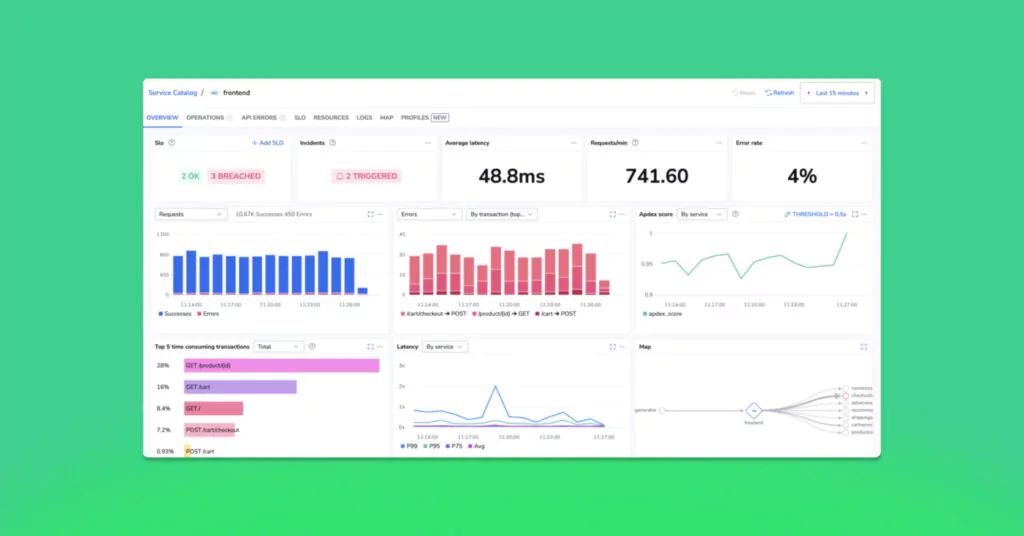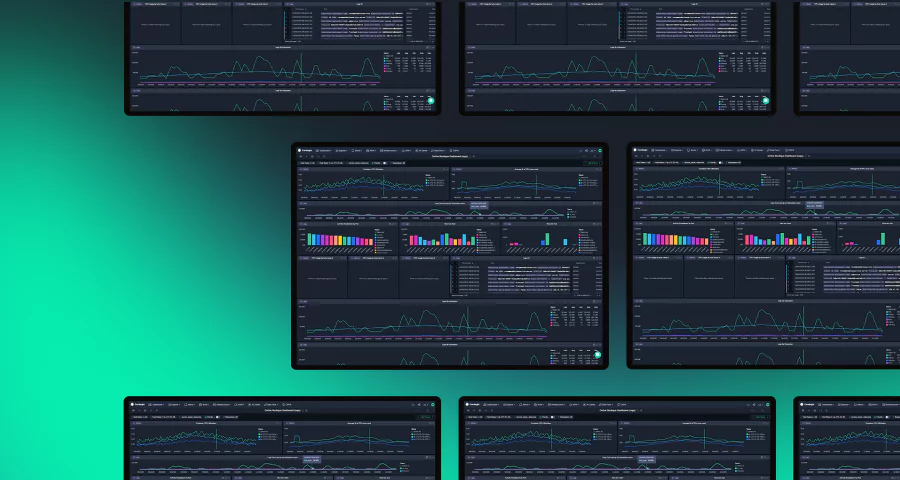Grafana Alloy: OpenTelemetry, With Some Abstraction Issues

OpenTelemetry (OTel) is supposed to be the great equalizer in observability, giving teams full control over how they collect, process, and store telemetry data. It was built to be open, flexible, and vendor-neutral.
Grafana Alloy claims to be OpenTelemetry-compatible, but scratch beneath the surface, and you’ll see that, based on our investigations, it is not a neutral OpenTelemetry Collector. It appears to be a heavily opinionated fork that may serve to keep users locked inside Grafana’s ecosystem. The cost of this sort of lock-in is wasted time, painful migrations, and lost flexibility.
Grafana Alloy vs. True OpenTelemetry
| Feature | Grafana Alloy | True OpenTelemetry |
| Storage Flexibility | Tightly integrated with Grafana’s stack (Loki, Mimir and Prometheus, Pyroscope) | Works with any backend, fully portable |
| Configuration | Modified OTEL syntax, requiring additional learning and adaptation | Standard OpenTelemetry Collector syntax |
OpenTelemetry with a Grafana twist
Grafana markets Alloy as an OpenTelemetry Collector, but there are components that may keep you in their ecosystem. While it technically supports OTLP (OpenTelemetry Protocol), its default configurations, data pipeline structure, and processing logic all encourage you to use:
- Loki for logs instead of an open ingestion pipeline
- Mimir and Prometheus for metrics, limiting flexibility
- Pyroscope for profiling, keeping you tied to Grafana’s stack
Details of configuration may seem minor, but abstraction layers help to ensure smooth migrations between tools. By introducing vendor specific logic and configuration into your OTel configuration, you’re adding complexity to any future migrations. This is a phenomenon known as vendor lock-in.
The dangers of vendor-centric OTel Collectors
Unlike the standard OpenTelemetry Collector, Grafana Alloy introduces vendor-specific modifications that may limit flexibility in the future. For example, Grafana Alloy requires specific syntax that is not part of the standard OTel configuration. This syntax will not work with other vendors, and forces customers to make configuration and code changes, should a migration be necessary.
❌ Modifies standard OTel configuration syntax, making it harder to integrate with other vendors
❌ Forces Prometheus-centric telemetry pipelines, limiting adaptability
❌ Adds Grafana-specific processing defaults, reducing control over observability data
A true OpenTelemetry implementation should not force you into specific storage, processing, or visualization tools.
Quiet vendor lock-in
Grafana markets Alloy as a flexible observability tool, but these patterns and configurations may encourage users to unwittingly adopt Grafana tooling & patterns.
You can export data, but the pipeline structure encourages you to keep it within Grafana
You can configure telemetry processing, but it defaults to Grafana’s settings
You can use other visualization tools, but Grafana’s UI remains the easiest path
In short, while Grafana Alloy may work for you as a collector, it favours the Grafana stack in its defaults and configuration, making the path of least resistance often the same path that leads towards the Grafana ecosystem.
Always pick OpenTelemetry, without vendor noise
If your goal is real OpenTelemetry, without hidden vendor dependencies, you need a pure OTEL implementation. The right solution should:
✔ Support any telemetry backend, without vendor bias
✔ Use standard OpenTelemetry Collector syntax, not proprietary modifications
✔ Give you full control over data pipelines and configurations
✔ Ensure long-term flexibility, so you can migrate easily if needed
Solutions like Coralogix provide true OpenTelemetry support, allowing teams to build observability stacks that serve their needs, not a vendor’s agenda.
The choice is yours. Just make sure it’s an open one
Observability is a long-term investment. Choosing a vendor-controlled OpenTelemetry distribution like Grafana Alloy will cost you flexibility, time, and control in the long run.
Disclaimer: This document is intended for informational and comparative purposes only and reflects Coralogix’s analysis of OpenTelemetry implementations based on publicly available information and internal research. While every effort has been made to provide accurate and up-to-date details, the statements herein should not be construed as definitive claims about third-party products, including Grafana Alloy. Coralogix acknowledges that Grafana Alloy offers OpenTelemetry support and is part of the broader observability ecosystem. The opinions expressed regarding vendor lock-in, configurational differences, and migration flexibility are based on our understanding and customer feedback but may not apply universally to all use cases. Readers are encouraged to review Grafana’s official documentation and conduct their own assessments to determine the best solution for their specific needs. Coralogix does not intend to misrepresent any third-party solutions, and any concerns regarding factual accuracy can be addressed through direct inquiry.




